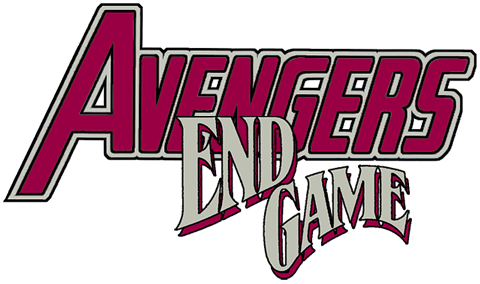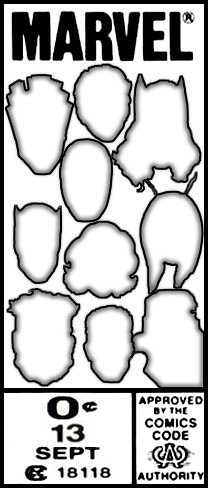

Stan Lee, Jack Kirby, [Joe Simon, David Michelinie, Roger Stern, M.C. Wyman, Bill Mantlo, Keith Giffen, Jim Starlin,] Christopher Markus, Stephen McFeely, Anthony Russo, and Joe Russo, 2019
 broad
broadspoilers
#48, 2019 Skandies
A lot of reviews pointed out that this was not really the fourth and concluding movie of the Avengers series, but the twenty-second and concluding movie of the whole first generation of the Marvel Cinematic Universe, which unfolded over the course of a dozen years. I’ve watched all of them. Of the twenty-one films before this one, all three Avengers movies landed in the bottom third of my personal tier list. The heart of each movie was a chaotic battle scene in which a bunch of superheroes, many or most of whom had essentially interchangeable powers, fought off hordes of aliens or robots or assorted other nasties. And the rest of the movie was just a matter of taking all the toys out of the box. So I was pleasantly surprised at how much of an improvement this one was. Fourth time’s the charm, I guess. It wasn’t nearly as good as the original Iron Man, but it holds its own with any of the other movies. Even the wild tonal variation, with broadly comic scenes interspersed with tearjerkers, is more of an asset than a liability. A lot of the difference probably comes down to the fact that this one was about payoff rather than setup—and, good golly, there’s a lot of setup in the MCU. Movie #21 is still doing setup!
I used to complain that the structure of American television back in
my day meant that the middles of shows could never really be planned:
creators didn’t know how many seasons they’d get, but
more seasons meant more money, and that meant stringing viewers along
as long as they could, creating what Pattern 35 calls “an indefinitely
drawn out and episodic middle”.
The same is true for comics, of course: while prestige projects such as
Watchmen and The Dark
Knight Returns were designed for a predetermined length, more
common is for comics to have a history like… oh, let’s
take a couple of Green Lantern ripoffs homages Marvel
launched in the second half of the ’80s, both of them pet
projects of their writers, who were higher-ups in Marvel
editorial.
Both series started with an origin issue; both had the luxury of being
able to wrap things up with a concluding issue rather than being
canceled mid-storyline.
Of these two series, Quasar lasted sixty
issues, all with the same writer.
Star Brand lasted nineteen—and
its original writer lasted six.
With that kind of variation, how do you plan the full arc of an
ongoing series?
Both titles were about the main character growing up, in different
ways—how do you judge the proper rate of personal growth
when you have your starting point and your endpoint but you don’t
know how long the middle is?
But these first twenty-two MCU films don’t have that
problem.
They have a different problem: an interminably drawn out
beginning and then very little in the way of a
middle before, with this film, an ending.
I mean, I guess I should have known an ending was coming. In superhero comics, though, almost no character’s story is ever really complete. Oh, sure, characters do get killed—not just as gimmicky plot devices with instant resurrections, but in ways seemingly meant to be permanent. For instance, Nick Fury was killed off in 1995, Iron Man also in 1995 (and again in 2016), Hawkeye in 2004, Captain America in 2007, the Wasp in 2008, Thor in 2011, the Hulk in 2016, the Black Widow in 2017, and the list goes on and on. Again, in most of these cases it seemed like the creators did intend to write the final chapter for the character in question, so that someone new could put on the costume and fresher stories could be told. And this is not to mention the times that any given superhero would be replaced over the medium term by someone else while still alive: heck, the first Marvel comic I ever bought was Iron Man #174, and Iron Man was James Rhodes. (Tony Stark had succumbed to alcoholism and was drunk in a slum somewhere.) But alive or dead, the originals always come back to take up the mantle. Nick Fury was brought back from the dead in 1998, Tony Stark in 1997 (and 2018), Clint Barton in 2006, Steve Rogers in 2009, Janet Van Dyne in 2012, Thor also in 2012, Bruce Banner in 2018, Natasha Romanoff also in 2018, and again, I could keep going. So when the big death scenes arrived for their MCU counterparts, the part of my brain that imprinted on these comics thought, all right, so they take a movie off and are back in two years. But in the comics, when you bring heroes back from the dead they look the same as ever. By contrast, this group of actors is already starting to look pretty gray. Unless you want to use the “Samuel L. Jackson CGIed back to 1995” trick from Captain Marvel on every character in every scene—and then, what, switch to full pseudo-AI replacements once the actors start to die off?—there actually is a time limit on how long a character can kick around a cinematic universe. So I’m going to take these as the actual endings for these characters and not a fake-out.
But that means that we end up with a saga with a whole lot of beginning, and with an ending, but very little in the way of a middle! Take Iron Man. In the comics, he’s been around for sixty years. Marvel time runs at about one-fourth the speed of real time, so about fifteen years have elapsed for the character since his first issue. During that time he’s had an adventure published every month, and often an Avengers adventure on top of that—in Marvel time, that means he’s doing something noteworthy once or twice a week. Oh, sure, there have been stretches when he’s gone missing for six months of Marvel time here and there, but still, put it all together and he’s battled hundreds upon hundreds of opponents. In the MCU, he’s had, what, ten appearances total? Or to turn to TV, look at Buffy the Vampire Slayer: not only did she appear in twenty-two episodes a year for seven years there, but the show establishes that she goes on nightly patrols and so every year has fought hundreds of vampires and demons we haven’t seen on top of the many we have. Her ending in the series finale paid off a lot of middle. For the MCU Avengers as a group, I mean… their first movie is their beginning, the last two movies are their ending, and so there is a grand total of one Avengers mission in the middle of their career as a team. Again, Endgame is a good movie. By the same token, Curtain: Poirot’s Last Case was one of Agatha Christie’s better books. But I don’t think it would have had quite the same impact had Hercule Poirot only previously appeared in The Mysterious Affair at Styles and Hickory Dickory Death.
|
|

|
|
|
 |
 |
 |
 |
||
|---|---|---|---|---|---|
Tumblr |
this site |
Calendar page |



